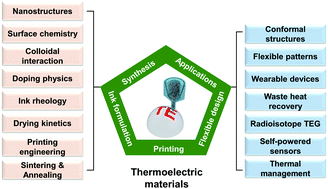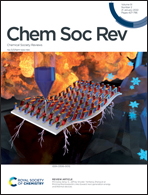Printing thermoelectric inks toward next-generation energy and thermal devices
Abstract
The ability of thermoelectric (TE) materials to convert thermal energy to electricity and vice versa highlights them as a promising candidate for sustainable energy applications. Despite considerable increases in the figure of merit zT of thermoelectric materials in the past two decades, there is still a prominent need to develop scalable synthesis and flexible manufacturing processes to convert high-efficiency materials into high-performance devices. Scalable printing techniques provide a versatile solution to not only fabricate both inorganic and organic TE materials with fine control over the compositions and microstructures, but also manufacture thermoelectric devices with optimized geometric and structural designs that lead to improved efficiency and system-level performances. In this review, we aim to provide a comprehensive framework of printing thermoelectric materials and devices by including recent breakthroughs and relevant discussions on TE materials chemistry, ink formulation, flexible or conformable device design, and processing strategies, with an emphasis on additive manufacturing techniques. In addition, we review recent innovations in the flexible, conformal, and stretchable device architectures and highlight state-of-the-art applications of these TE devices in energy harvesting and thermal management. Perspectives of emerging research opportunities and future directions are also discussed. While this review centers on thermoelectrics, the fundamental ink chemistry and printing processes possess the potential for applications to a broad range of energy, thermal and electronic devices.



 Please wait while we load your content...
Please wait while we load your content...
